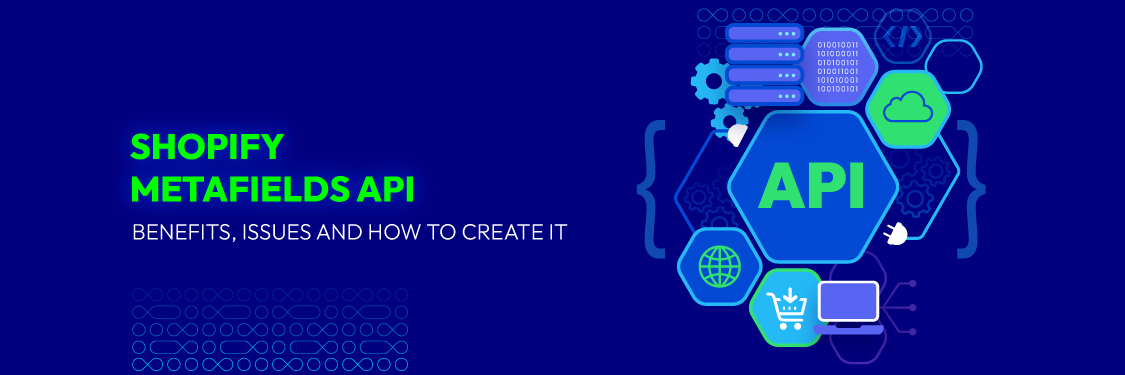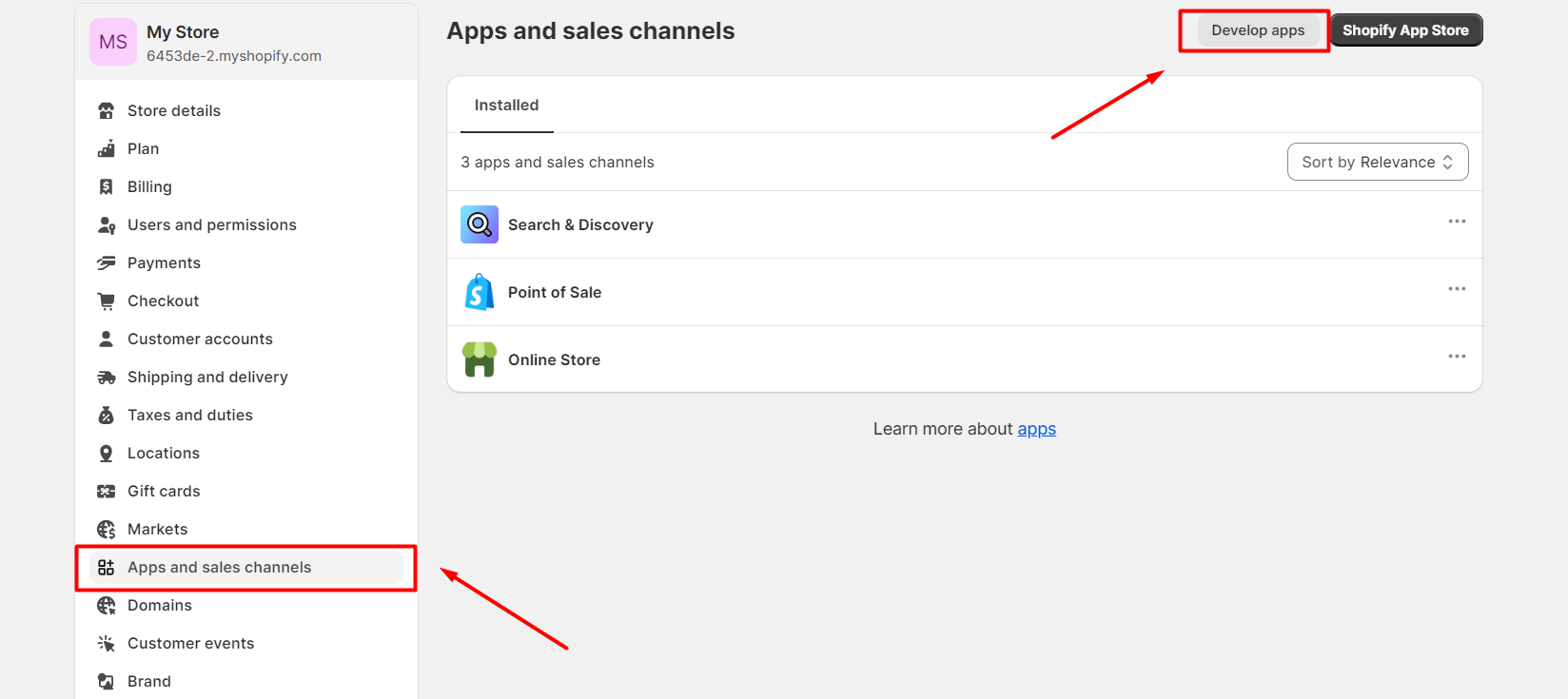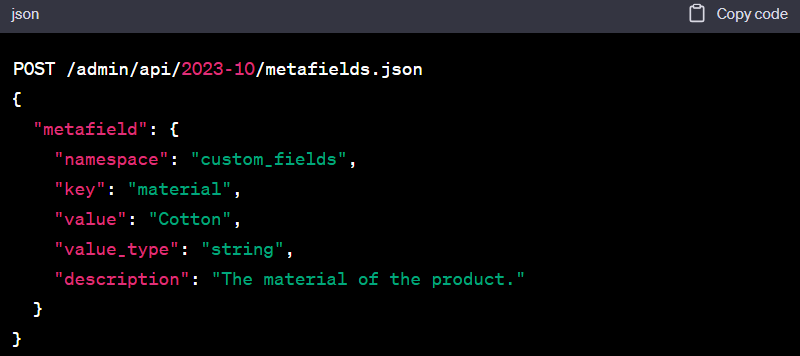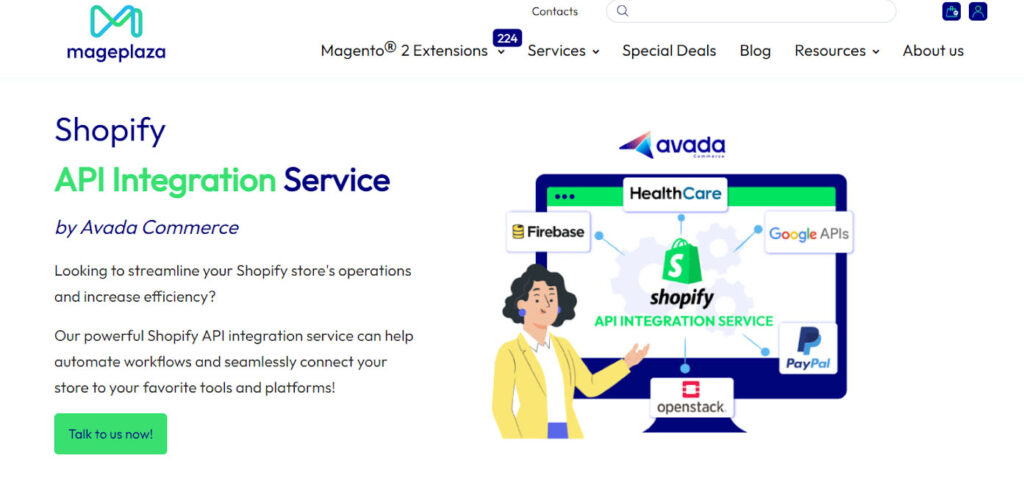Shopify Metafields API: Benefits, Issues and How to Create It
Summer Nguyen | 01-05-2024

Metafields have gained significant popularity and importance within the e-commerce community, especially within platforms like Shopify. Their utility extends beyond just Shopify and is observed in various systems that utilize metadata for added flexibility and customization. This article will show you general knowledge about Shopify Metafields API and how to create a metafield for a product.
Table of Contents
What is Shopify metafields API?

Shopify API metafields is a feature that allows you to add custom metadata to various Shopify store objects, such as products, variants, collections, customers, orders, and more. In this case, metadata can be defined as additional information or properties that you want to associate with these items in addition to the standard fields provided by Shopify.
In addition, this is also an extremely optimal tool for e-commerce platforms like Shopify. Thanks to the Metafield Shopify API, you can access and modify your store’s information. Metafield also allows you to enhance your product categories and improve customer experiences so you can find new ways to operate your store.
Metadata can be created manually or processed information automatically. Manual generation is more precise because it allows the user to enter any information they feel is relevant to the description of the other data.
Metafields Shopify API components
Shopify Metafields comprises several components that help define and organize custom metadata for various store objects. The main components of Shopify Metafields are:
- Namespace: A namespace is a container that holds connected sets of metafields. It is used to group metafields with the same purpose or context. Namespaces are unusual in that they can be used to organize and manage metafields. For example, a “Product Details” namespace may contain product-specific metafields.
- Key: A key is a namespace-specific identifier. It’s used to go to a certain metafield within a namespace. Keys are used to get or update the value of a certain metafield. Within the “Product Details” namespace, for example, you might have keys like “Size,” “Color,” or “Material.”
- Value Type: The value type defines the data type of the metafield’s value. Value types supported by Shopify include text, integer, decimal, boolean, URL, color, picture, date, product reference, custom object, HTML, and raw. The type of data stored in the metafield is determined by the value type.
- Value: The value is the actual data stored within a metafield. The value should match the data type defined by the value type. For example, if you have a metafield with an “integer” value, the value should be a whole number.

These components work together to define and structure custom metadata in your Shopify store. When creating and using metafields, you typically specify a namespace, a key, a value type, and provide a value for the metafield. This structured approach allows you to add and access custom data for various store objects while keeping it organized and manageable.
Assume you wish to include custom metadata regarding product sizes. You could make a “Product Details” namespace and then declare a “Size” key with a value type of “string.” The “Size” key can then be set to particular size information for each product.
You may construct an organized system for adding and retrieving custom information throughout your Shopify store using namespaces, keys, value types, and values, which can be very useful for customization, organization, and customer experience optimization.
Types of Shopify metafields
Shopify Metafields come in several different types, each designed for specific use cases and data requirements. Here are the common types of Shopify metafields:
- String: String metafields are used for storing text-based information, such as product descriptions, additional notes, or textual data.
- Integer: Integer metafields are used for storing whole numbers, which can be useful for quantities, item counts, or numeric identifiers.
- Decimal: Decimal metafields store numbers with decimal places, such as prices, measurements, or dimensions.
- Boolean: Boolean metafields can store “true” or “false” values. These can create binary options, like product availability (in stock/out of stock).
- URL: URL metafields are used to store website links. This can help add links to external resources or related products.
- Color: Color metafields allow you to define and display colors for products. This is often used for indicating product variants available in different colors.
- Image: Image metafields are used for storing image URLs. This can be valuable for adding additional product images or icons.
- Date: Date metafields are for storing date information, such as release dates, availability dates, or expiry dates.
- Product Reference: Product reference metafields allow you to link a product to another product in your store. This can be useful for cross-selling or displaying related products.
- Custom Object: Custom object metafields allow storing complex data structures, such as JSON objects. This gives developers a high degree of flexibility to store and retrieve custom data.
- HTML: HTML metafields are used to store rich text or HTML content, which can be used to create custom content within your store.
- Raw: Raw metafields are for storing unformatted or raw data, which is suitable for developers who want to control the formatting and presentation of the data themselves.

These metafields enable you to store a wide range of data and information connected with your Shopify store items, allowing you to meet various business requirements. However, you should consider your intended use, the type of data, and how it will be used on your Shopify store to choose the appropriate metafields.
When working with metafields, selecting the correct type and utilizing consistent naming conventions and structure is critical to make data management in your store more efficient.
Benefits of Shopify metafields API
The use of metafield on web pages is important. Metafield contains descriptions of the page’s content and keywords associated with the content. This metafield is often displayed by search engines in search results, meaning its accuracy and detail can influence whether or not a user decides to visit a website. The Shopify Metafields API offers several benefits for store owners and developers, including:
- Customization: This level of customization is valuable because it enables you to tailor your store’s data to your specific needs. You can store additional information or attributes not provided by default Shopify fields.
- Enhanced product information: For example, you can add more detailed product specifications, sizes, usage, and storage instructions. From there, customers can decide to buy products more quickly and effectively.
- Improved SEO: Metafield can lead to better rankings and visibility via meta descriptions, titles, search keywords, and other SEO-related information. When customers search for products on Shopify, your store will always appear at the top, helping to impress customers better.
- Structured data: You can save it in many formats, such as JSON. This organized data can be utilized to build advanced filters, custom reports, or display more information on your storefront. It facilitates the presentation of facts in a more ordered and systematic manner.
- Apps and integration customization: From the Metafield API, developers can create many other applications and integrate users’ requests to store many different data types. From there, your Shopify store will be expanded with more unique features to make the management and operation more convenient.
- Data organization: You may effectively arrange your data by setting custom metafield namespaces and keys. This is especially beneficial if your store has many metafields connected with various items. It contributes to data consistency and integrity.
- Flexibility: The Metafields API is versatile and can be used with various store objects, including products, collections, customers, and orders. This means you can apply custom metadata to multiple aspects of your store.
- Improved customer experience: Detailed product information and custom metadata can enhance the overall shopping experience for your customers. They can find the information they need more easily, leading to increased customer satisfaction and conversion rates.
- Better inventory management: Metafields can record inventory information such as product dimensions, weight, and stock levels. This is especially beneficial for retailers who must manage complex or specialized inventories.
- Easier data migration: Metafield API makes migrating data from your Shopify store easier. This custom data will be preserved during migration, ensuring that information will not be lost or altered.
- Security: Metafield can also set security, authenticate access, and edit rights, thereby controlling distribution.
- Related products displaying: Using the “Search & Discovery” function, you can select associated products when searching for another product or connect that product to another Shopify account. Use the “product reference” method to add recommended products to your store’s homepage.

While the Shopify Metafields API offers great flexibility and customization choices, it should be utilized cautiously and in a manner that corresponds with your business needs and objectives. Metafield organization and documentation are critical for keeping your store’s data manageable and structured.
How to create Shopify metafields API
Step 1: Create API credentials
- Log in to your Shopify store as an admin.
- Go to Apps > Manage private apps or Apps > Develop apps.

- Click on Create new private app.
- Provide necessary details and permissions (like access to Read and Write for the product).
- Save your changes to get your API key, password, and access details.
Step 2: Create Shopify metafields with product ID
To create metafields for products, collections, customers, or other entities, follow these steps:
- Make a POST request to the appropriate endpoint for the entity to which you want to add metafields. For example, to create a product metafield, use the /admin/api/2023-10/metafields.json endpoint.
- Include the required parameters in the request body, such as namespace, key, value, value_type, and an optional description.

Step 3: Retrieve Metafields
To retrieve existing metafields for a specific entity, use a GET request to the appropriate endpoint. Make sure to specify the entity and its ID in the URL.

Step 4: Update Metafields
To update existing metafields, request a PUT to the specific metafield’s endpoint with the updated data. You need to provide the namespace, key, and the new value.

To delete a metafield, use a DELETE request to the specific metafield’s endpoint.

Step 5: Test and Implement API in your system
- Use tools like Postman or Insomnia to test your API requests and ensure they work as expected.
- Integrate API calls into your system to dynamically manage metafields based on your business requirements.
Creating a Shopify metafields API is not too complicated. In addition to following the instructions above, you should also pay attention to the following tips:
- Ensure you have the appropriate permissions and authentication (using the API key and password) to access the Shopify store.
- Check the Shopify API documentation for the specific endpoints, request formats, and other details.
- Consider error handling and best practices for API usage, including rate limiting and pagination for large datasets.
Some common issues when using Metafields Shopify API

When working with the Metafields API Shopify, several common issues might arise:
- Authentication and Permission occur when your API credentials (API key and password) are incorrect or lack the necessary permissions. Ensure your app has the required scope for metafield manipulation.
- Improper endpoint or parameters:
- Incorrect URL or endpoint for metafield creation, retrieval, update, or deletion.
- Invalid parameters or missing required fields in the request body.
- Data validation and formatting:
- Data Type Mismatch: Providing a value of the wrong data type for a specific metafield could cause issues. For instance, you are passing a string instead of an integer.
- Invalid Characters or Length: Special characters, excessive length, or restricted characters might cause issues with certain fields.
- Existing Metafields and Conflict Resolution:
- Metafield Already Exists: Attempting to create a metafield with the same namespace and key for an entity that already has a metafield with that combination.
- Conflicting Changes: Simultaneous updates or deletions of metafields might cause conflicts or unexpected behavior.
- Error Handling and Response Codes:
- Generic Errors: Inadequate error messages might lead to difficulties in identifying the root cause of the problem.
- Unexpected Errors: Issues not explicitly documented might surface due to system changes or temporary server problems.
Addressing these common issues involves meticulous error handling, proper data validation, and adherence to Shopify’s API best practices and guidelines.
How to manage Shopify API Metafields
Once metafields have been defined in the context of a larger data governance program, the final important step is to define a metadata management tool to help capture, organize, evaluate, and archive. This should be an automated process to facilitate data tracking and data management.
Of course, this could be done using spreadsheets; keeping the information automatically updated would cause problems. Capturing, publishing, and editing metadata across all current and future data projects reduces the time spent finding insights, helping Shopify stores make more informed business decisions.
By understanding and evaluating data from many different perspectives, along with an integrated data management program, store owners can successfully build a comprehensive e-commerce glossary. From there, they can ensure a solution that manages and empowers all data users to leverage trusted data.
Use Mageplaza Shopify API Integration service
An API integration service is a platform or solution that facilitates the connection and communication between software applications using Application Programming Interfaces (APIs). APIs define the methods and protocols for different software applications to interact and share data or functionalities.

Mageplaza primarily focused on providing extensions and solutions for Magento, an e-commerce platform different from Shopify. If you are looking for an API integration service for your Shopify store, Mageplaza will suit your needs.
Key components of Mageplaza Shopify API Integration Service include:
- APIs: APIs define the rules and protocols for how software systems can communicate with each other. They specify the requests and responses necessary to access the functionalities or data of a system.
- Integration Platform: The integration platform acts as a mediator between different systems, enabling them to connect, exchange data, and trigger actions across platforms.
- Data Mapping and Transformation: Data often needs to be transformed to fit the format required by the receiving system. Integration services handle the mapping and transformation of data between different systems.
- Workflow Automation: Some integration services provide workflow automation, allowing businesses to create custom workflows that automate tasks and processes across integrated systems.
Using API Integration Services will bring maximum benefits to your Shopify store, specifically:
- Efficiency: Streamlining processes by enabling different systems to work together efficiently.
- Data Synchronization: Ensuring that data across systems stays consistent and up-to-date.
- Increased Functionality: Combining the strengths of various systems to create more comprehensive functionalities.
- Automation: Automating repetitive tasks and processes, reducing manual effort.
API integration services act as intermediaries facilitating the interaction between different software systems, allowing them to work together seamlessly. They are crucial in today’s tech landscape, where Shopify stores often rely on many software systems that need to communicate and share data effectively.
In addition, Mageplaza is also having a free 1:1 program for customers to consult the service and experience the application for free in the first 30 days. During the experience period, you can use the features that the Mageplaza integration service provides, and can decide whether the application is suitable for your needs or not.
Conclusion
Shopify Metafield API is useful and necessary in today’s digital age. With metafield API, you can update product information and manage data on the Shopify e-commerce platform. However, you must also consider common problems when using metafields in business. If you know how to use data properly, you will take full advantage of its benefits.






![Top 20+ Must-have Shopify Apps for 2025 [Free & Paid] - Mageplaza](https://cdn2.mageplaza.com/media/blog/must-have-shopify-apps/top-must-have-shopify-apps.png)
![[2025 Updates] Top 10+ Upsell Apps for Shopify - Mageplaza](https://cdn2.mageplaza.com/media/blog/best-upsell-shopify-app/cover.png)